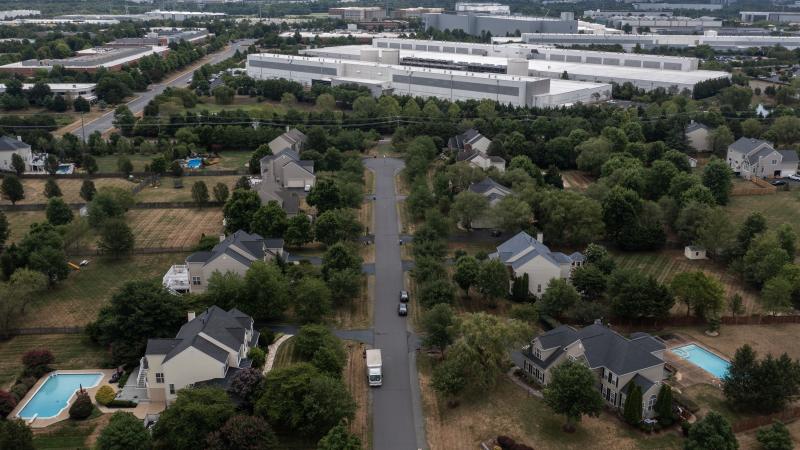WaPo climate story inflates impact of urban heat island effect by 3,600%, takes 5 days to correct
While the media often report carbon dioxide emissions as a sort of control knob that determines global temperatures, researchers are beginning to take a closer look at the impacts of the Urban Heat Island Effect. But does their math make sense?
The Washington Post reported on August 3 about a study in the peer-reviewed journal Nature Cities about the impact of the Urban Heat Island (UHI) effect. The phenomenon is driving increased temperatures in cities, and according to the study, the difference is as much as a half degree Celsius.
However, Erin Blakemore, a freelance writer based in Boulder, Colorado, made a large error in the article, something Anthony Watts, senior fellow for environment and climate at the Heartland Institute noticed. Blakemore reported that the difference in temperatures between urban and rural areas is as much as 32.9 degrees Fahrenheit.
Blakemore didn’t respond to requests for comment on this article, but the error appears to have been made the result of confusing temperature conversions. While 0.5 degrees Celsius is, in absolute terms, 32.9 degrees Fahrenheit, converting a change in temperature of 0.5 degrees Celsius to its equivalent in Fahrenheit is actually 0.9 degrees.
It took the Post five days to correct the blunder.
“If what she said were true, a pleasant city temperature of 65°F would be impossibly cooled down to 32.1°F (nearly freezing) by the effect of nearby rural areas. How embarrassing,” Watts wrote in Climate Realism, a publication of the Heartland Institute.
The Washington Post carried a headline based on the error, claiming that rural areas are cooler than urban areas by as much as 30%. Some readers also noticed the error and remarked on the wild claim.
“Um, 30% cooler? The math makes no sense. What is the temperature scale? Did they mean to write 3% cooler? Assuming the scale start at 32F (0C) then: when it's 95F (35C) in New York City, it could be 67F (19.5C) in leafy suburbs that border wilderness, which doesn't happen. This article is ridiculous,” a comment by “rosiegwa” posted on Aug. 5 stated.
While the media often report carbon dioxide emissions as a sort of control knob that determines global temperatures, researchers are beginning to take a closer look at the impacts of the UHI.
Dr. Alec Feinberg, a climate scientist, industrial physics consultant, and founder of DfrSoft, told Just the News in July about his own research into the effect. Feinberg estimates that urbanization contributes to as much as 12.7% of global mean surface air temperature, and by using lighter materials, such as concrete over asphalt, we could cool cities by as much as 5.5%.
Despite readers' comments, the Post did not correct the article until five days later, saying "A previous version of this article stated incorrectly that rural land surrounding urban areas could help cool cities by up to 32.9 degrees Fahrenheit. The headline also incorrectly stated that nearby rural land can cool cities by nearly 30 percent. Both errors have been corrected." The Post offered no explanation for the error.
Chris Martz, an atmospheric science senior at Millersville University, told Just the News in March that the Global Historical Climatology Network Daily has five stations surrounding the D.C. metro area. Martz compiled the data from those stations, which have spring average temperatures going back to 1893.
Heartland's Watts told Just the News he regularly sees misinformation coming from climate reporters. Most of the journalists hired on this beat, he said, have little, if any, math or science background. According to Popular Science, Blakemore's "specialties include women’s issues, social determinants of health, and finding the fun in seemingly dry subjects." Blakemore's science reporting has been corrected in the past and as recently as last May.
Blakemore does not appear to have any training in medicine, ecology, meteorology or climatology, but the San Diego School of Creative and Performing Arts says she graduated from SCPA in 1998, did coursework at Smith College, and graduated from UCLA with a degree in history.
The Facts Inside Our Reporter's Notebook
Links
- Washington Post reported
- Nature Cities
- Erin Blakemore
- Heartland Institute noticed
- DfrSoft
- told Just the News in July
- told Just the News in March
- Popular Science
- shows no warming trend since at least 1921
- Blakemore's reporting
- corrected in the past
- last May
- San Diego School of Creative and Performing Arts












